Organizations are available on Pro and Enterprise plans.
Key Features of Organizations
-
Role-Based Access Control: Organization Memberships feature three main roles:
MembersOrganization Members have automatically Team Member rights in all Teams belonging to the organization. This means they can also manage all incidents of the organization’s teams. However, to add them to a team’s on-call schedule, you need give these users explicit team roles, additionally.AdministratorOrganization Administrators have automatically Team Administrator rights in all Teams belonging to the organization. This means that on top of being able to manage incidents of all teams, they can also manage all users of the organization’s teams. Moreover, they can create overarching policies, such as routing to teams. If applicable, they can also manage the organization’s status pages and related serveices.OwnerOrganization Owners additionally have exclusive rights to manage the organization itself, including member roles and organization settings.
- Advanced Incident Routing: Organizations enable sophisticated routing mechanisms that allow incidents to be dynamically assigned to different teams within the organization, enhancing responsiveness and incident handling. Incidents can be auto-escalated to additional teams using the “Assign to Team” routing rule. Alternatively, you can manually change the team or add additional teams to an incident using the “Assign” action.
Benefits of Using Organizations
Organizations are designed to offer advanced team management and coordination capabilities:- Centralized Management: Simplify the administration of multiple teams by centralizing management tasks under one organization.
- Scalable Team Dynamics: As your team or business grows, Organizations make it easier to scale management and operational processes without compromising on efficiency or oversight.
Should I Use Organizations?
While Organizations offer powerful features for team management and coordination, they are an advanced feature:- Optional, Not Required: Utilizing Organizations is not mandatory to achieve full functionality in All Quiet. They are optional and suitable for users who require advanced management capabilities.
- Ideal for Multiple Teams: Organizations are best suited for scenarios involving management of multiple teams, providing tools to streamline administration and incident management across several teams.
- Consider Your Needs: It is important to assess whether your current or anticipated team dynamics necessitate the advanced coordination capabilities that Organizations provide. E.g. organizations allow you to share one outbound integration amongst several teams. This allows you to send incidents from differenet teams within your org to the same slack channel, using the same integration.
What’s the difference between Organization & Team Memberships?
At All Quiet, Team and Organization Memberships are independent of each other. Users with Organization Memberships have rights for all teams within the organization, allowing them to interact with all incidents. However, they are not part of any schedules, escalations, or rotations, meaning they are never on-call. To include a user in a team’s on-call escalations, assign them a specific Team Membership in addition to their Organization Membership. Organization Members are not billed. Billing is based on the number of unique users with Team Memberships across all teams. You can view all billed users under “Billing & Subscription > Your current usage”.Setting Up Your Organization
1
Create New Organization
Navigate to the 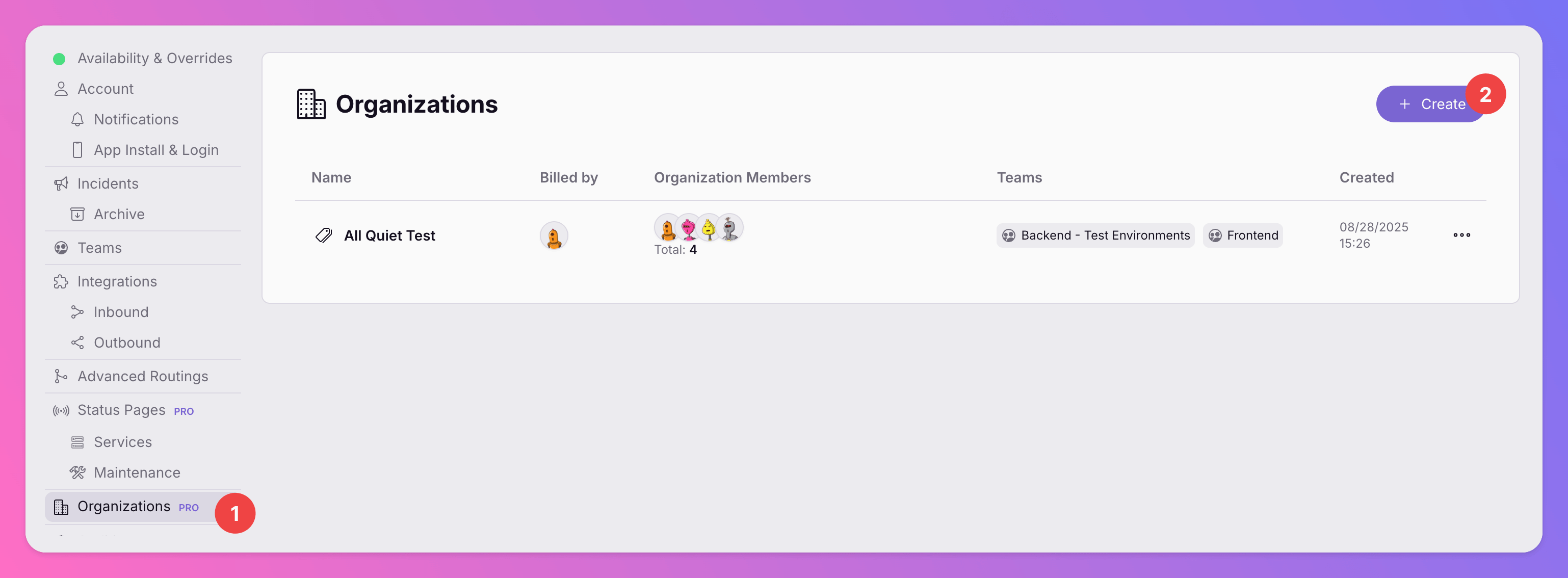
Organizations section in the sidebar and click on Create New Organization. New Organizations can be created by Billable Users and Organization Owners of existing Organizations.
2
Name, Select Teams and Create Your Organization
Enter your organization’s name in the 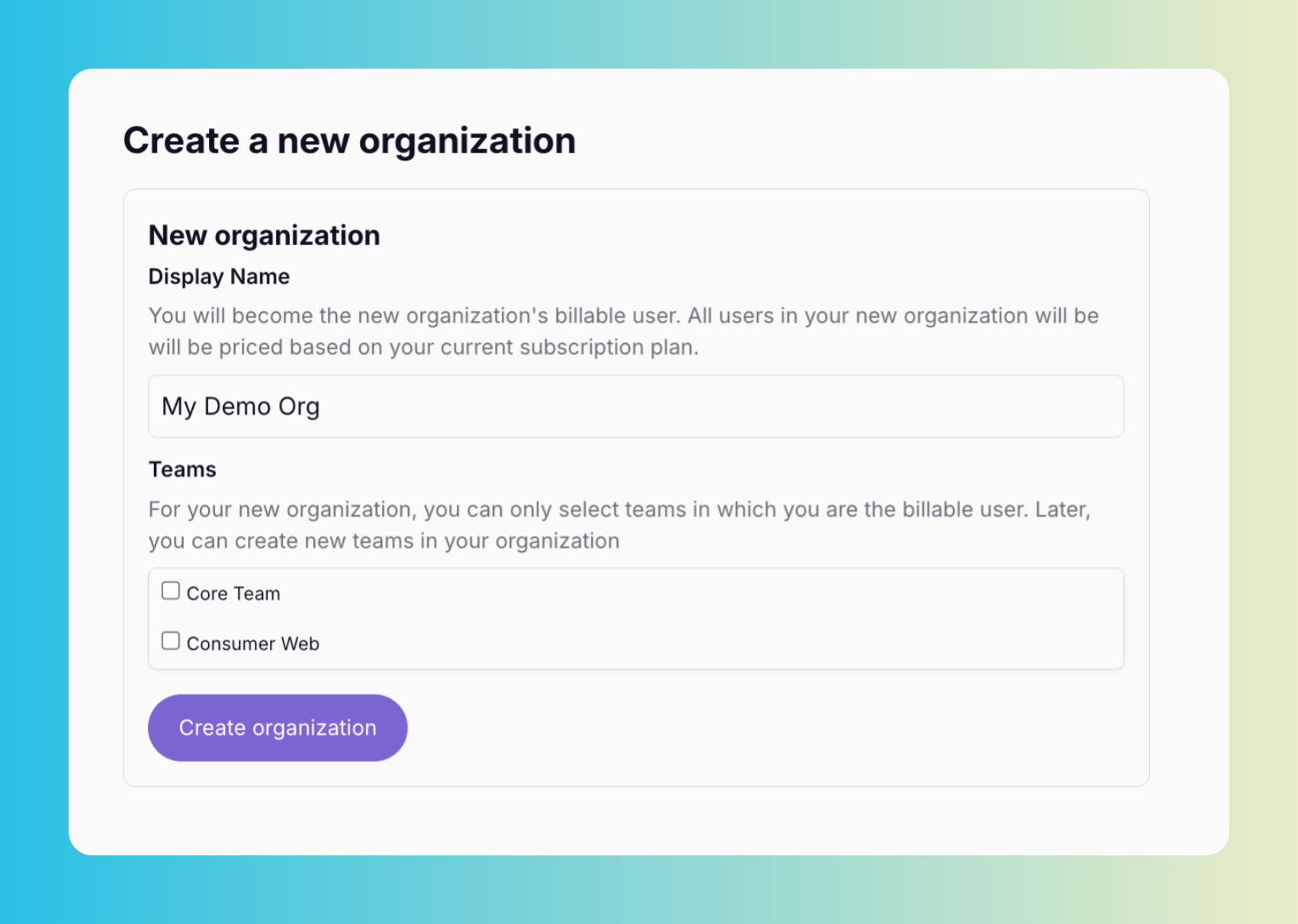
Display Name field, such as My Demo Org. Next, select the teams you wish to include in your organization. Teams can be modified later through the team’s edit form or directly within your organization’s settings. As you are creating the Organization, you will become the Organizations Billable User. You can change the Billable User later on.
3
Organization created
After creating the Organization, you will be redirected to the Organizations overview. From here, after creating your org, you’ll have several options to manage it (1-7), accessible for Billable Users and Organization Owners. Let’s explore them below.

Edit the Organization
- Click
Editto access the edit view of your Organization. - You can change the orgs
Display Name - If you are the Billable User or an Organization Owner, you can update the Billable User here.
- Click “Save” if you want to keep your changes.
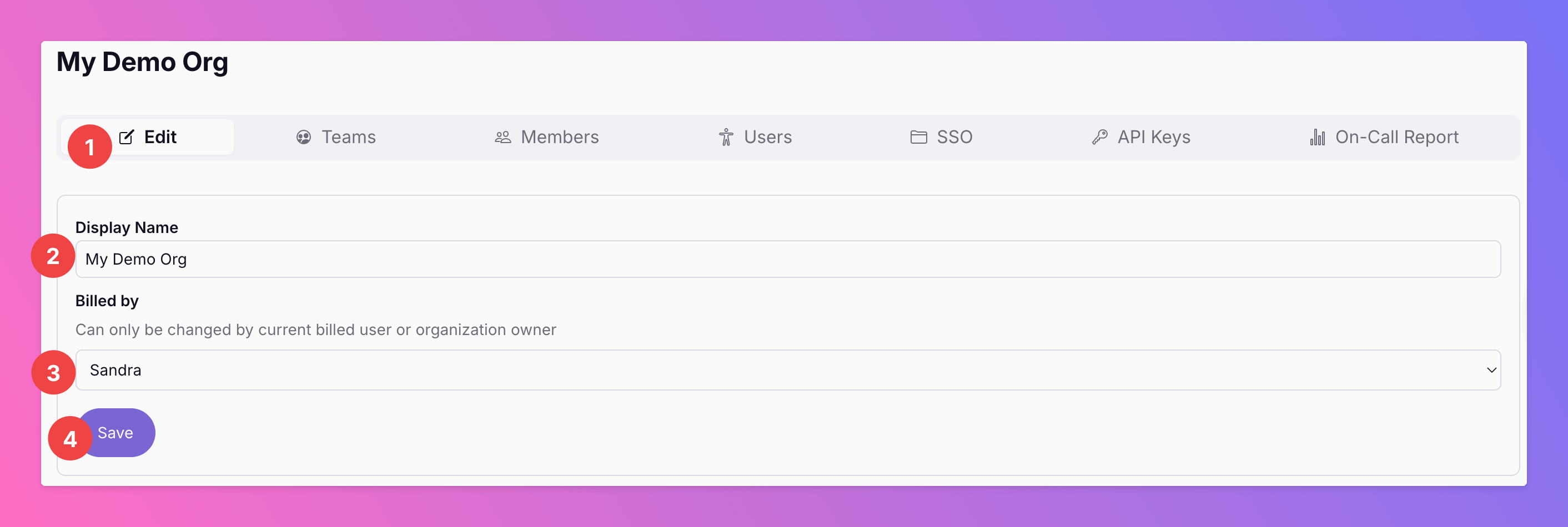
Edit the Teams of the Organization
- Click
Teamsto access the view showing all Teams of your Organization. - If you are the Billable User or an Organization Owner, you can update the teams here. Besides the teams already in the organization, you can also add teams that are not currently part of any organization, provided you are the Billable User for them. If you want to add teams for which you currently lack the necessary rights, contact their Billable User and request that they either add the team to the organization or assign you as the Billable User.
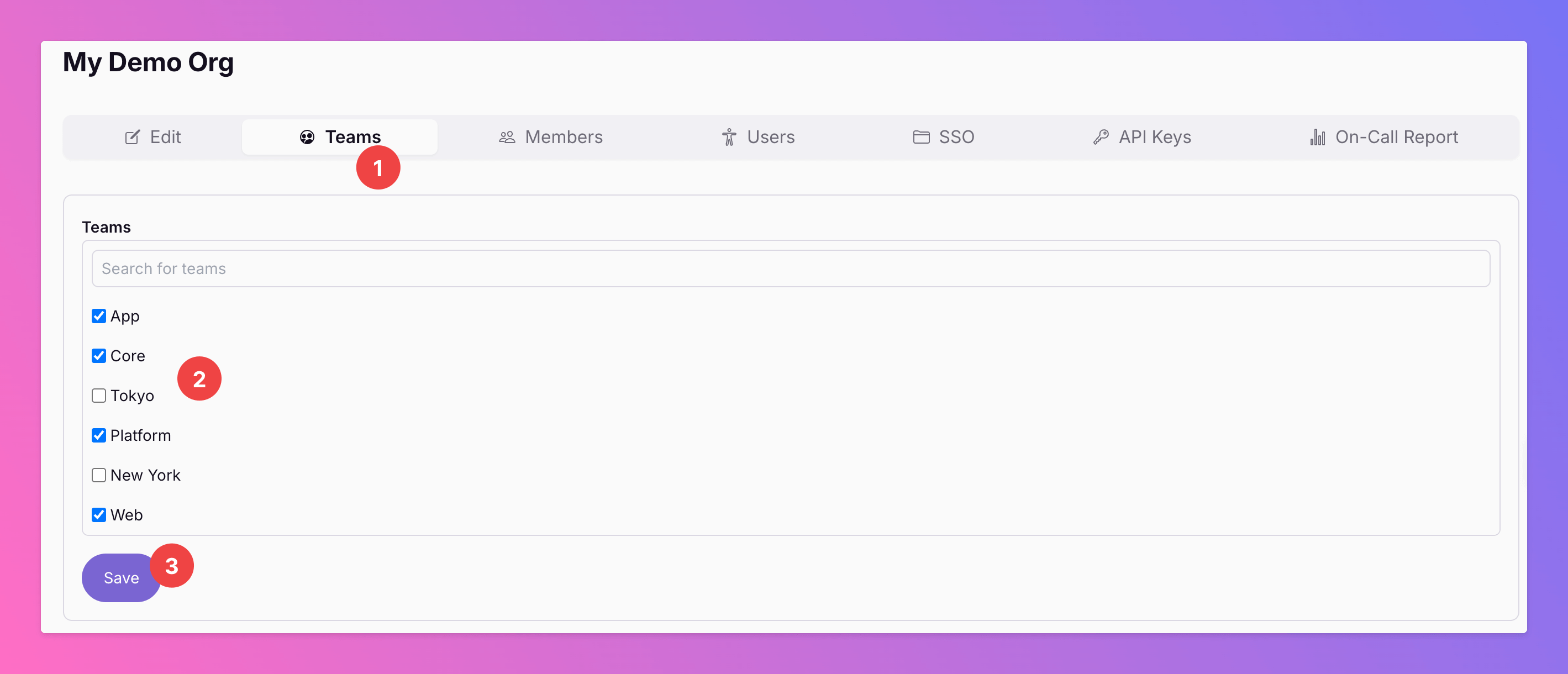
Manage Organization Members
-
Click
Membersto access the the member management. - Note that when creating an Organization, you are automatically assigned the role of Owner within it. Also, you become the Billable User.
-
Regular Team members should be invited directly through their respective Teams, so you won’t find them here. Billable Users can see all their billed users on the
Billing & Subscriptionpage in theYour current usagesection. -
To add your colleagues who should have administrative capabilities, click
Invite New. Remember, this step is only necessary for users who need organizational administrative privileges.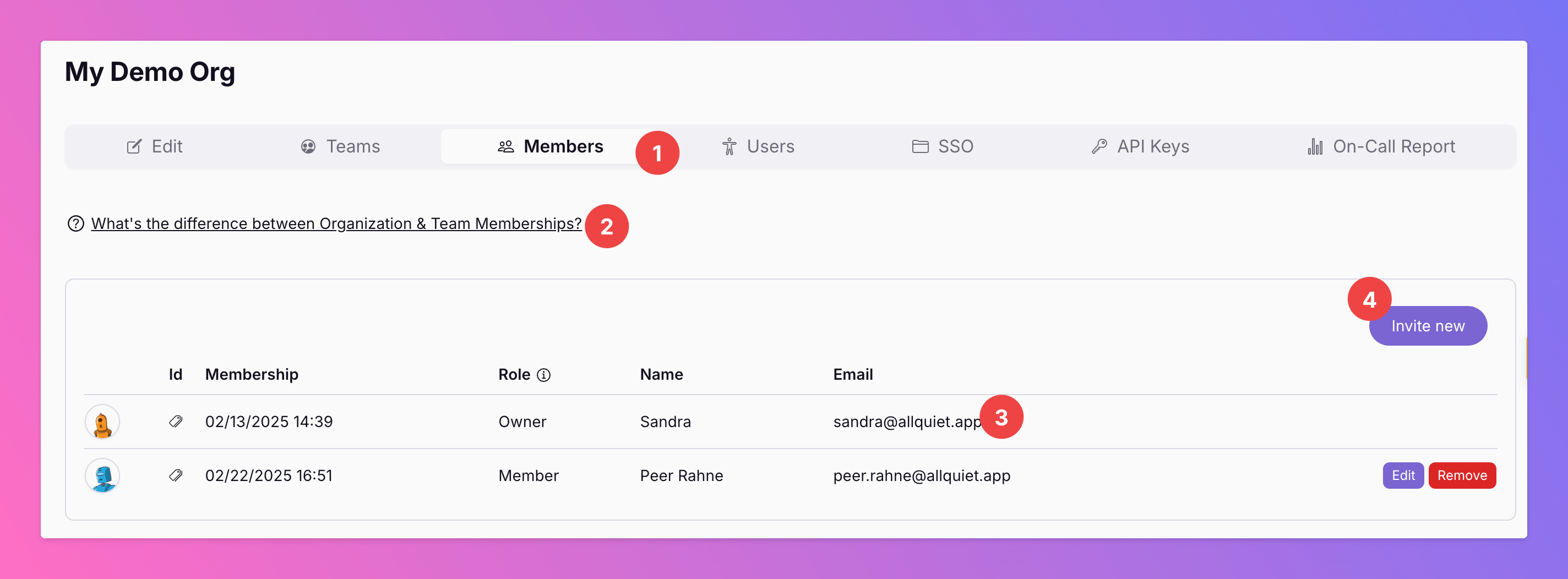
Invite new opens a layover to invite new members to your organization. You have the option to invite new users who are not yet part of All Quiet, or you can select from a list of users with whom you are already associated within the platform. You can also decide which role they should have in the Organization, Member, Administrator or Owner. Learn more about the difference, here.
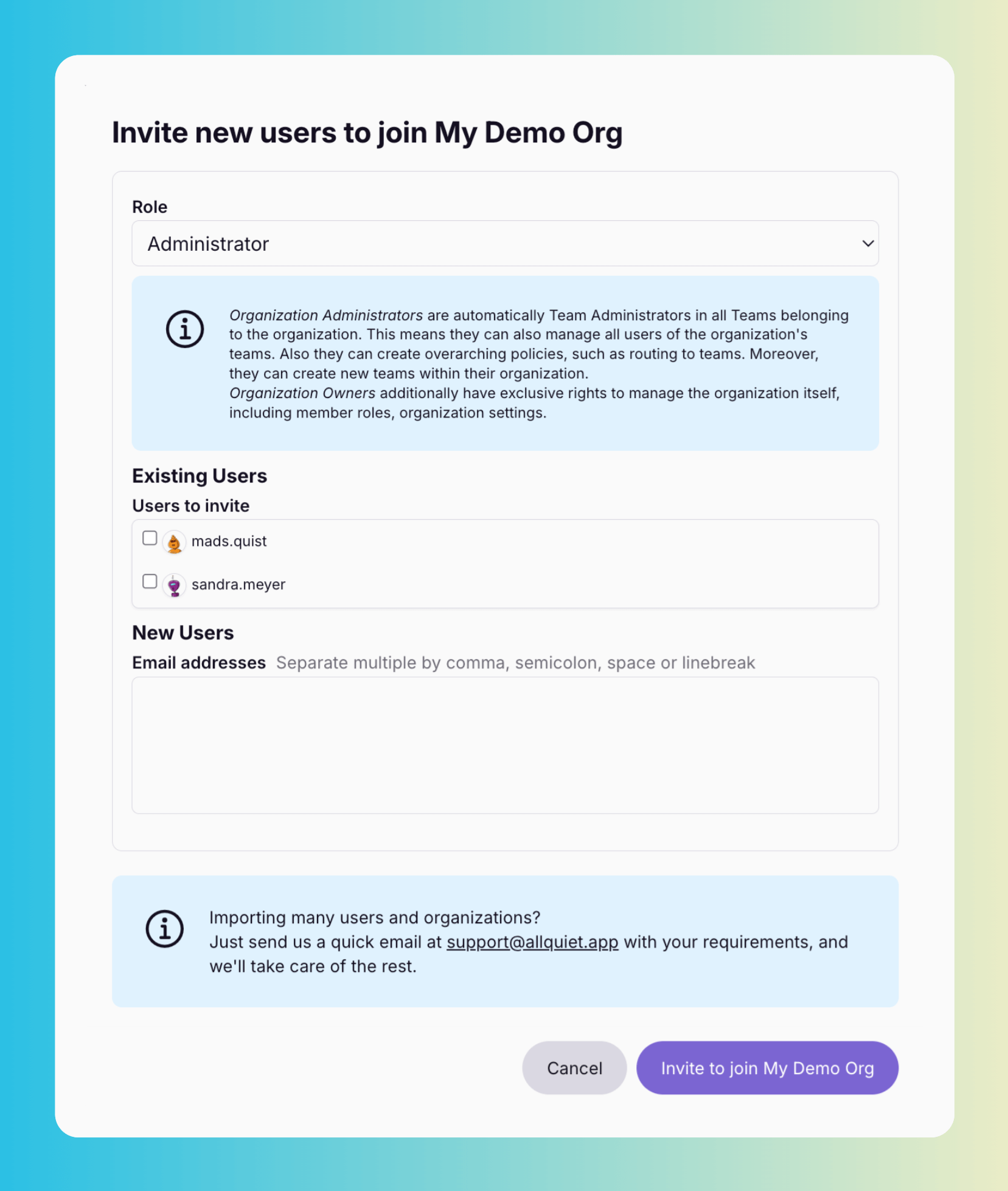
SSO - OIDC & SCIM
To set up OIDC & SCIM, follow this guide.Users
- On this page Organization Owners can find all users with team and / or organization roles.
- When provisioned via SCIM or Terraform, you can only delete the users via their source, e.g. by removing them from the provisioned Groups in SCIM.
- For security reasons, you cannot delete yourself via this view, as this can lead to a deletion of the whole org.
- You can
Deleteother users of your organization. If a user only has roles within this specific organization and it’s teams, their entire All Quiet account will be deleted and anonymized. However, if they have roles in other organizations or teams, their account will remain active — but they will lose all access to this organization’s resources.
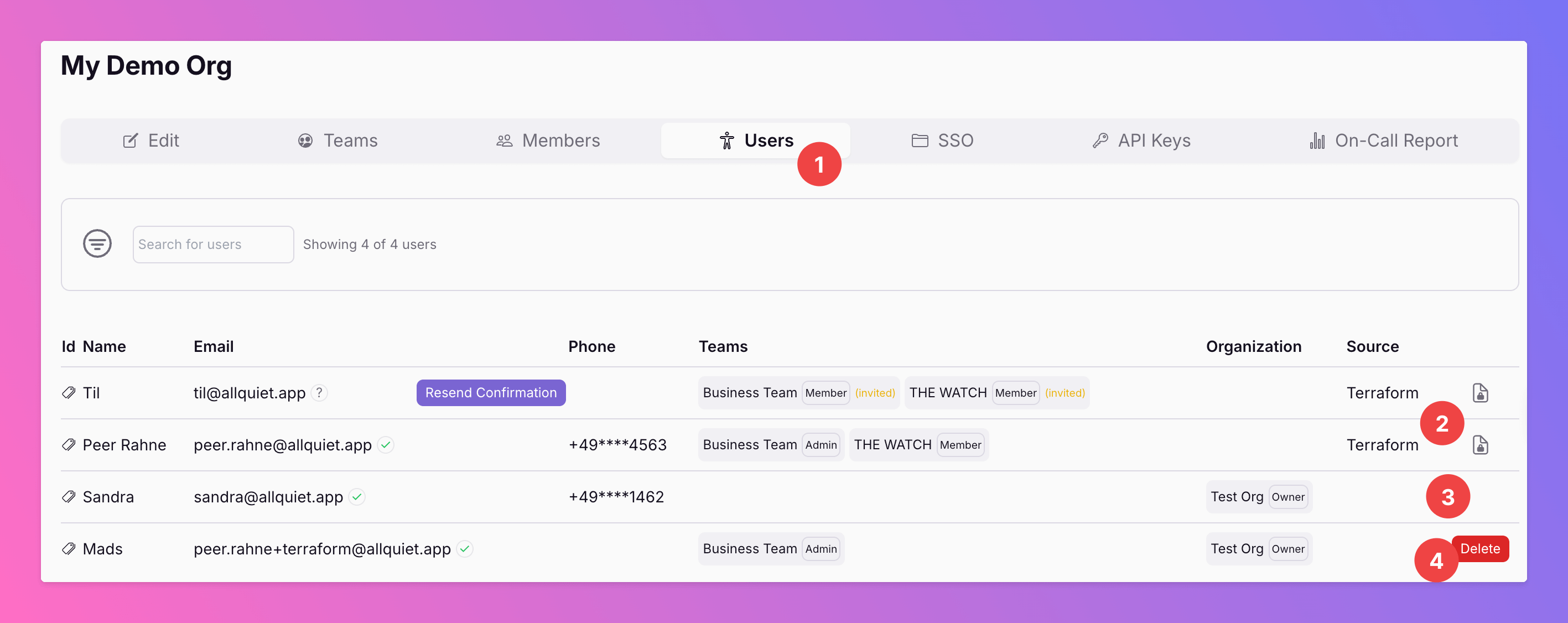
API Keys
Here, you can create and find the API keys you need to use SCIM and Terraform with All Quiet.On-Call Report
For more info about the on-call report, please read the Reports documentation.Creating a New Team in Your Organization
The Billable User, Organization Administrators and Organization Owners can create a new team in an Organization.1
Step 1
Under 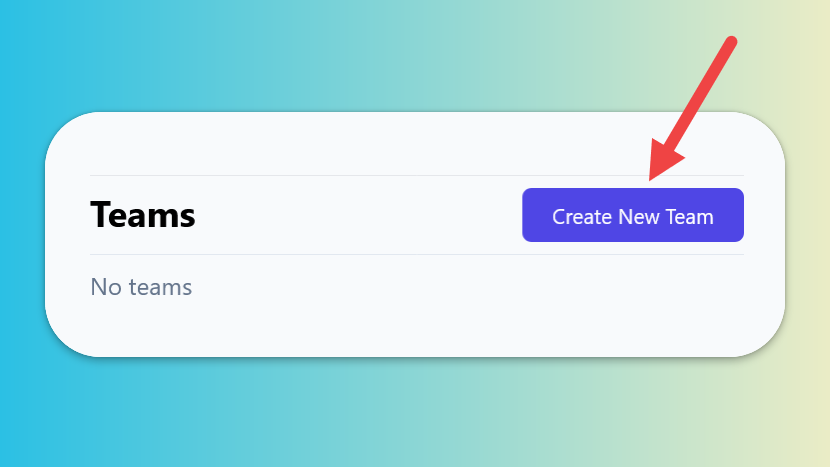
Teams click Create Team.
2
Step 2
Pick a team’s name. Then, select the organization you want to add the team to. The Billable User of the selected Organization will become the new team’s Billable User, too.
To create a team in a new organization, create a new organization first. Hit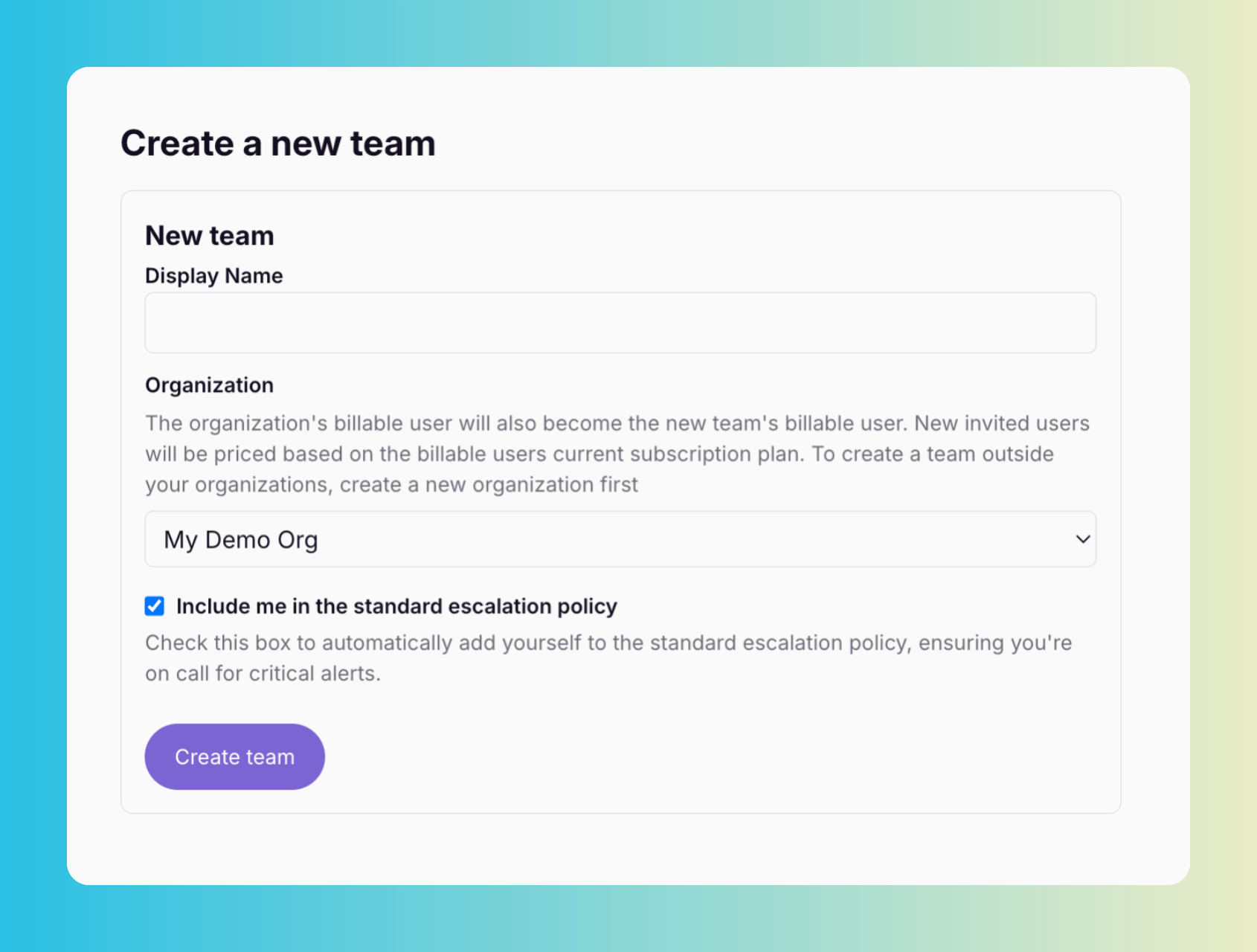
To create a team in a new organization, create a new organization first. Hit
Create. Later, Team Name and Organization can be changed, again.